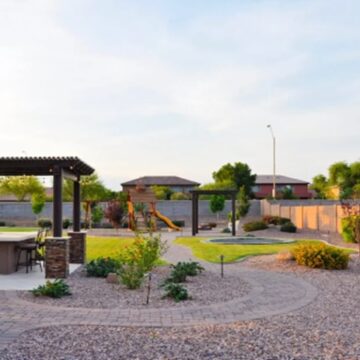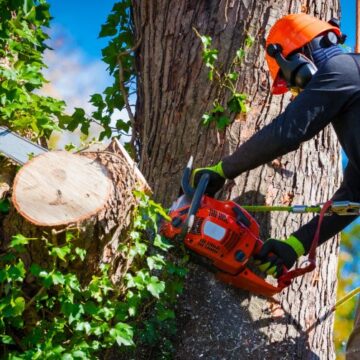North America is home to the largest number of oak trees. Considered a keystone species, oak trees play a vital role in a range of habitats. Worldwide, there are about 500 species in existence. Regarded as symbols of strength, these beautiful trees can live over 150 years. It’s not surprising that many people choose to landscape with oak trees or work to preserve the oak trees on their property.
Unfortunately, many species are facing extinction in the wild. In the US, entire oak ecosystems have been affected. This makes preserving oak trees on your property even more important. If you notice you have a sick oak tree, don’t hesitate. Identifying and caring for a sick tree will not only help the biodiversity of your own property but help the ecosystem as a whole. If you suspect you have a sick oak tree, read below for tips on what to do.
Identify the Cause
Knowing what causes a tree to become sick is the first step in knowing how to care for it. Like a doctor assessing a patient, identifying the cause of sickness is the necessary first step in knowing how to proceed and what treatments are best. Oak trees can become sick due to disease, pests, lack of care, or physical damage caused by home construction, yard maintenance, or a storm.
We’ve outlined five of the most common diseases and how to treat them. If you’re unable to determine the root cause, contact your local arborist. Recognizing the signs of disease can be tricky if you aren’t a professional. An arborist will not only identify what is making the tree sick but will determine what care is needed or if it needs to be removed for safety.
- Armillaria Root Rot
The most common type of disease is Armillaria root rot, or oak root fungus. Typically caused by overwatering, heavy rains, or poor drainage, this root rot disease is caused by the fungus Armillaria mellea. If you notice large groups of honey-colored mushrooms forming at the base of the tree during late summer or fall, especially during wet weather, your oak may have this disease.
Trees infected with Armillaria root rot can experience decaying of the roots and lower trunk, dead branches in the upper canopy, yellow to brown foliage, and often break and fall over in storms. Left untreated, your tree will experience poor growth and eventually die.
If your tree has Armillaria root rot, there are several steps you can take to manage the disease and prevent further spreading. Remove all the infected wood, including as much of the root system as possible. Do not replant where the disease originated, this reduces the risk of reinfection and spreading the disease to other trees. Have infected trees inspected by a certified arborist. They will be able to determine structural stability and remove any unsafe trees.
- Anthracnose
Anthracnose is a fungal disease that causes dark lesions on the leaves. It’s more common to the white oak and red oak groups and can be identified by dead areas along the leaf veins that appear as brown spots or patches.
Treat your trees infected with anthracnose by pruning and destroying any dead twigs or branches during dormancy. In addition, new leaves and branches can be treated with the appropriate fungicide to protect new growth.
- Oak Leaf Blister
Most oak species are vulnerable to oak leaf blister, a fungal leaf disease caused by the fungus Taphrina caerulescens. During spring seasons, spores germinate and infect the leaves. Fungi secretions lead to an overgrowth of leaf tissue and result in blister-like patches on the leaves. Check your oak tree by examining the leaves. Look for light green spots that raise up like a blister.
Oak trees are typically susceptible to oak leaf blister, and most infections are minor and relatively harmless. If you notice small patches on your tree, this will typically require no action. However, a severe infection can lead to premature leaf loss and midsummer defoliation. If your tree has a severe infection, apply a fungicide in the spring at the time of bud-swelling. Chlorothalonil is registered for use in controlling oak leaf blister but must be applied before bud break, otherwise, it will be ineffective.
- Powdery Mildew
If you notice a white, powdery growth on the surface of the leaves, your tree may be suffering from powdery mildew. Caused by several fungi, the foliage of your tree will begin to dry out and prematurely fall. The leaves may also appear to be malformed. Though most cases will not require any treatment, more severe cases can be controlled by Myclobutanil or thiophanate-methyl sprays.
- Scale
Scale insects are common pests that feed on oak trees, sucking the sap of the trees and excreting a waste substance called honeydew. A mold fungus grows on the honeydew, which coats the leaves and stems of the oak tree, creating dark splotches. If the infestation isn’t treated, your oak tree will experience stunted growth resulting in yellow leaves, small flowers, and early leaf drop.
Insecticides are most effective at the crawler stage. Once scales reach adulthood, insecticides do little to control infestation and natural remedies are best. This includes parasitic wasps and ladybird beetles.
Preventative Care
As a general rule, reducing stress on a tree will aid in prevention and treatment. Some easy steps to reduce stress on a tree are to water trees during drought, mulch around the base of the tree, fertilize trees with slow-release tree and shrub fertilizer during the spring, and avoid injuring trees with lawn equipment.
However, if a tree is infected, removal may be necessary. This may be limited to branches or portions of the root system that are infected or may necessitate removal of the entire tree. If you have a sick oak tree that needs removal, contact a certified arborist. Tree removal is dangerous and can compromise the safety of surrounding trees, property, or you and anyone else nearby.
Mr. Tree is a professional tree service located in the Portland area. Our certified arborists have the knowledge and experience to take care of all your tree service needs. Contact our friendly team of experts today and help preserve the beauty of your trees for many generations to come.
















